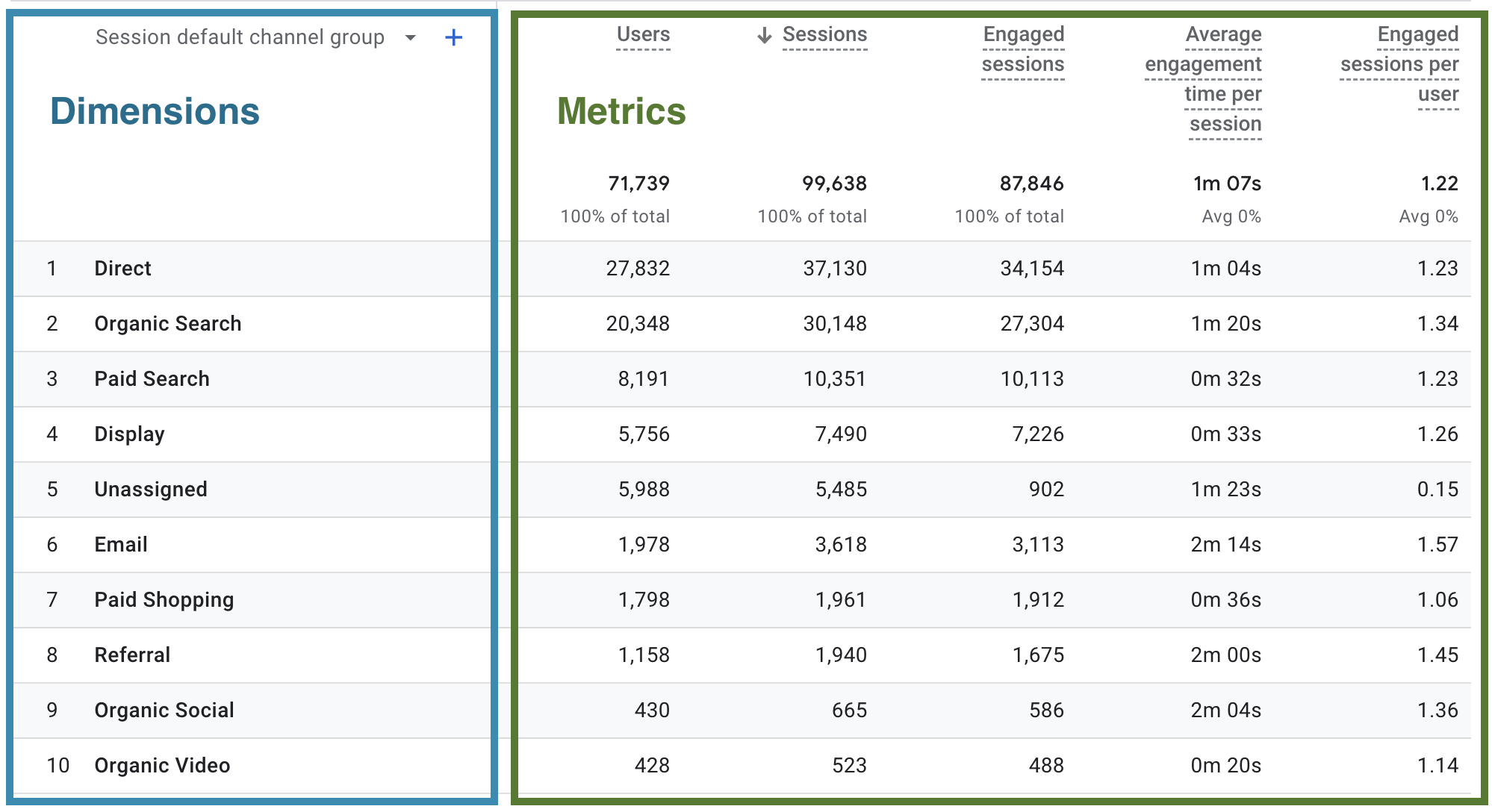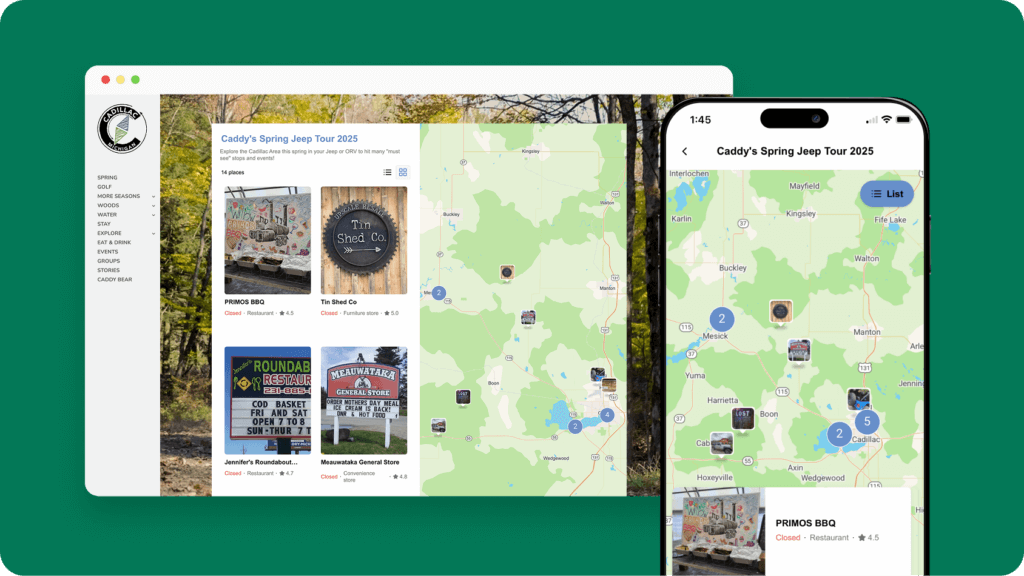
If you use any of Google’s marketing tools, you’ve likely received the banners and notifications advising you to set up Google Analytics 4 (GA4), the company’s newest reporting software that’s shaking up the marketing industry.
Last year, Google confirmed that Universal Analytics (the current reporting software) will cease to track new data as of July 1, 2023, and marketers will need to switch to GA4 to continue tracking site performance.
Here’s a summary of what’s new and different about GA4 and how it impacts the future of data reporting.
This isn’t just a change in software, it’s a change in how we measure our marketing efforts. It utilizes machine learning to fill in gaps in data.
What’s different about Google Analytics 4
Because of evolving privacy laws, tracking platforms simply aren’t able to capture as much hard data as they used to. GA4 uses machine learning to try and fill in any gaps and offer visibility into how users interact with various aspects of your marketing efforts through multiple touch points (visits) to your website.
The new age of Google Analytics is less about specific numbers and more about looking at high-level trends and patterns through thoughtful analysis.
In essence, GA4 was created for a few main reasons:
-
to accommodate the increasing demand for user privacy
-
improve the ability to measure across websites and apps
-
offer a new way to customize reports around what matters most to your organization
The key thing to know is this: Universal Analytics and Google Analytics 4 are vastly different platforms in how they capture, process, and display data.
The latest iteration of Analytics ushers in the ability to measure things across platforms, as well as to gain a new perspective on how users are interacting with your various digital marketing assets, like websites and apps. Rather than having separate properties for every platform, GA4 bridges the gap between multiple domains and apps.
New Features in Google Analytics 4
Data modeling done differently
Universal Analytics has always gathered its data based on sessions. For example, a single session can contain multiple page views, events, social interactions, and ecommerce transactions.
Google Analytics 4 runs on a user-based model that collects data in the form of events. In fact, GA4 automatically tracks a host of events to fulfill the essential reporting requirements of the platform.
AI-powered features for insights and predictions
The new iteration of Analytics boasts a new AI to provide predictive metrics intended to help marketers make smarter, data-driven decisions about audiences and engagement before it even happens.
Currently, there are only three predictive metrics supported by GA4:
-
Predictive probability: that a user who was active in the last 28 days will purchase something in the next seven days.
-
Churn probability: the probability that a user who was active on your site within the last seven days will not be active within the next seven days.
-
Revenue prediction: the predicted revenue expected from all purchases in the next 28 days from the users who were active in the last 28 days.
In order to see these predictive events, you must configure a ‘purchase’ event and send it to GA4. Larger businesses with considerable traffic who naturally have a larger sample size will benefit more from this feature than small businesses.
Unfortunately, these predictive metrics likely aren’t going to be overly relevant for most destination marketers right now, but museums, hotels, and attractions who offer online ticket sales certainly could take advantage of them.
More visibility into customer lifecycles and cross-platform tracking
Do you have a host of microsites for various campaigns, or a custom app that services visitors? Well, now you can bring all that juicy data under one property with GA4. With cross-platform tracking, you can now visualize user journeys across platforms.
However, there is a bit of a caveat to this. First, it takes quite a bit of advanced setup in Google Tag Manager to get this working. Second, in order to track users across platforms, users will need to be logged in with a unique user ID.
A new reporting dashboard
The first thing you’ll likely notice about GA4 is its new dashboard. It’s more streamlined than what we’re accustomed to in UA with fewer pre-built reports.
You’re still presented with the essentials under the Reporting tab for acquisition, engagement, monetization, demographics, and tech. These reports really just provide the basics about the number of users, where they came from, and how they typically engaged with your site.
New ways to dig into your data
As marketers, we’re generally big fans of having control over everything we can. As mentioned, the Google Analytics 4 platform is slimmed down compared to its predecessor in terms of pre-built reports. That said, the Explore section where you can build reports that suit your organization is more prominent than ever, and once you figure out how to navigate it, will save you a lot of time.
A bigger emphasis on Events
As a platform that’s rooted in tracking events, everything you want to track will need to be set up using Events and Event Parameters.
What the heck are event parameters? Don’t worry, we’ve compiled a list of key terms you should know below.
Unfortunately, this change does mean that marketers will need to be more hands-on with setting up their events, or working with an expert in GA4 to get things tracking properly.
If you’re hoping to track data that’s already coming into GA4, (let’s say, organic site visits from Canada), then you can use the Explore tab to build a custom report. While this is more cumbersome than it is in Universal Analytics, the reports you build will always be available to revisit at any time.
If you’re hoping to track data from specific button clicks or form submissions, you’ll need to manually set these Events up in Google Tag Manager. If you have custom events set up on your site for Universal Analytics, they might still port over to GA4, but you’ll want to modernize them as GA4 events in the near future.
What’s missing from GA4?
Say buh-bye to Bounce Rates
One of the more prominent metrics you’ll notice is no longer available is Bounce Rate (spoiler alert: it’s not really gone). Since GA4 hones in on engagement, this metric has been flipped and reframed as ‘Engagement Rate’. So while a lower bounce rate was ideal in Universal Analytics, a higher engagement rate is now what we should all be aiming for in GA4.
Another new metric is Engaged Sessions, which counts every session where someone spent either 10 seconds or more on a page, visited multiple pages, or produced a conversion.
Goals are gone, sort-of
Goals were used to measure how well a site or app fulfills a target objectives. A goal could have been a purchase made on a site, a contact form submission, a number of pages in a session, you name it. But you could create Events to track those things too. In the end, many marketers found the distinction between the two was often muddy and confusing, so it wasn’t surprising to see Goals removed from the next generation of Analytics.
Instead, everything is tracked through Events. Once GA4 recognizes something as an Event, you can toggle whether you want that Event to be considered a conversion with ease.
The future of reporting should be to understand and demonstrate how users are interacting with your website and where they came from, without getting too hung-up on the exact numbers.
Key Terms in GA4 And What Do They Mean?
When you’re trying to comb through any GA4 training, you’ll likely come across a lot of terminology that you might have heard in passing before but didn’t really need to know unless you were an advanced user. Now, in order to confidently set up detailed reports in the Explore tab, you’ll want to be well-versed in these key terms:
Parameters
A parameter provides information and context about the ways users interact with your website, and they largely apply to events. For example, if you’re a DMO that’s tracking clicks to stakeholder websites, a parameter would be the URL of the website. If you’re tracking content downloads, like a visitors guide, the event parameter would be the name of the guide.
Metrics
While parameters are the ‘what’ of an event, metrics are the ‘how many’. Metrics are qualitative measurements and refer to the number of times an event happens.
Dimensions
Dimensions are attributes that can be used to describe, segment, and organize data. When you’re viewing a report in Google Analytics, this is usually the left-hand column of a report that lists things like pages, channels, or locations to name a few. While all of the columns to the right are metrics about the dimensions you’re examining.

*Data Source: Google
Understanding what’s new and different about Google Analytics 4 is a very important first-step towards a successful migration.
Next steps
If you haven’t already, we recommend setting up your Google Analytics 4 property as soon as possible. You can likely do this yourself without having to involve a developer.
There are a few different ways to do this. If you’re using WordPress, there are several plugins that can implement your GA4 tracking. But if you’ve got several pixels for every social media platform you’re advertising on, the best approach is to use Google Tag Manager to centralize all of your tracking in one place. For more advanced event tracking, talk to your developer about transitioning any existing event tracking to Google Analytics 4 Events.
Want more tips on how you can work more efficiently? Check out this post on 7 Ways Busy DMOs Can Use CrowdRiff to Work Smarter, Not Harder.











